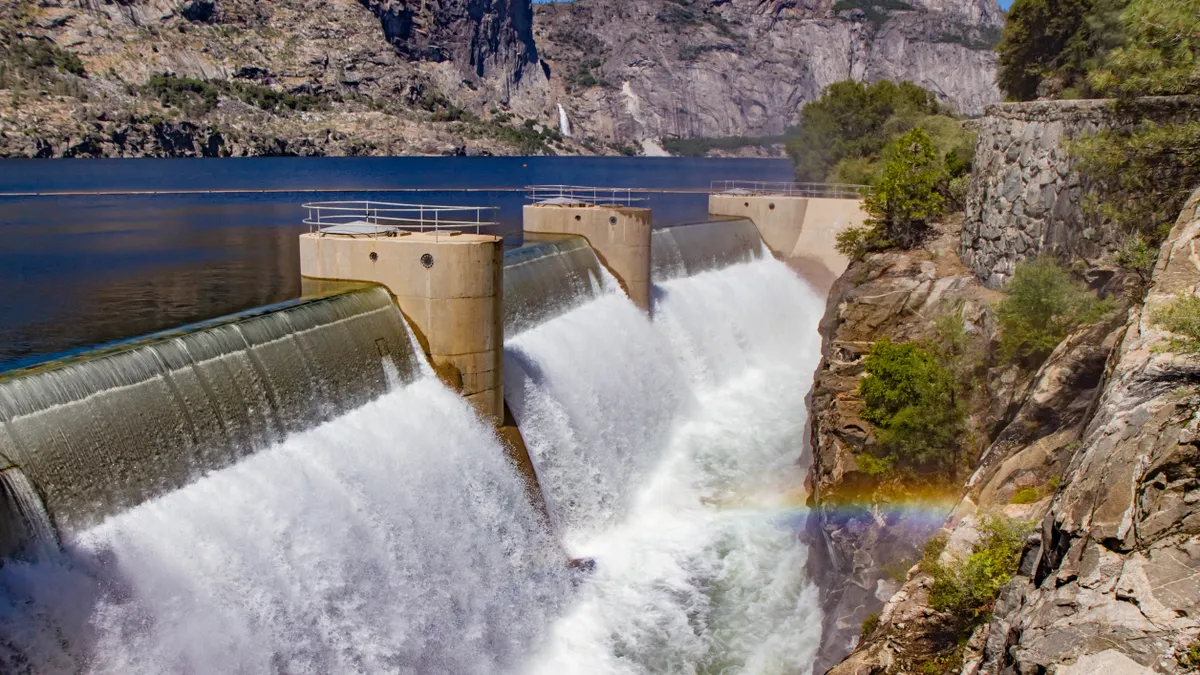Dive Brief:
-
The U.S. Department of Energy has issued a request for information regarding the distribution of $630 million made available by the Bipartisan Infrastructure Law for capital improvements at hydroelectric facilities.
-
While the majority of the funds must go to projects related to grid resiliency, dam safety and environmental improvements, $75 million has been set aside to provide incentives for projects that can improve facility efficiency by at least 3%.
-
Input regarding potential selection criteria for the funds, as well as the timing of distribution and other issues, is due to the DOE by Sept. 6.
Dive Insight
Hydroelectric industry leaders, clean energy advocates, and government officials will collaborate this summer to determine how best to divvy up $630 million dedicated by the Bipartisan Infrastructure Law to improving existing hydropower plants.
The $630 million represents a fraction of the $62 billion in funds the law delegated to the DOE to create jobs and increase clean power generation. But it’s also critical to achieving the Biden administration’s goal of creating a net-zero emissions economy by 2050.
“Water is one of humankind’s oldest methods of generating energy, and with technological advancements, we can harness this renewable power as a core driver for the nation’s clean energy transition,” U.S. Secretary of Energy Jennifer Granholm said in a statement. “The investments from President Biden’s Bipartisan Infrastructure Law recognize that hydroelectricity is essential to strengthening the power grid and providing reliable, clean, and affordable energy for our communities as we transition to a net-zero economy.”
Hydroelectric facilities currently produce 6% of all U.S. electricity, but represent 32% of all renewable generation and 93% of utility-scale energy storage, according to the DOE.
The Bipartisan Infrastructure Law directs the DOE to ensure that historically underserved and underrepresented communities and individuals have equitable access to the funds. Programs funded by the law must also support the creation of good-paying jobs and strong labor standards.
Beyond this, the hydroelectric power funding must also improve energy efficiency and grid resiliency, maintain dam safety and reduce environmental impacts, according to the DOE. Incentives provided by the DOE cannot exceed 30% of the total cost of the candidate project, with a cap of $5 million per facility per fiscal year.
However, the DOE still has a number of questions to address before it can begin to disperse the funds, according to the agency’s June 29 request for information. The RFI seeks input on how the agency should define key terms, the best timing for the dispersal of funds, and what kind of projects would most benefit from potential incentives. The agency also seeks input on how it can best collaborate with the Federal Energy Regulatory Commission to implement the incentives.
Interested parties may request an individual discussion about the RFI with a DOE staffer up to Aug. 19.














